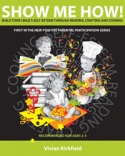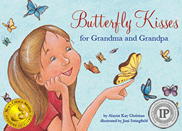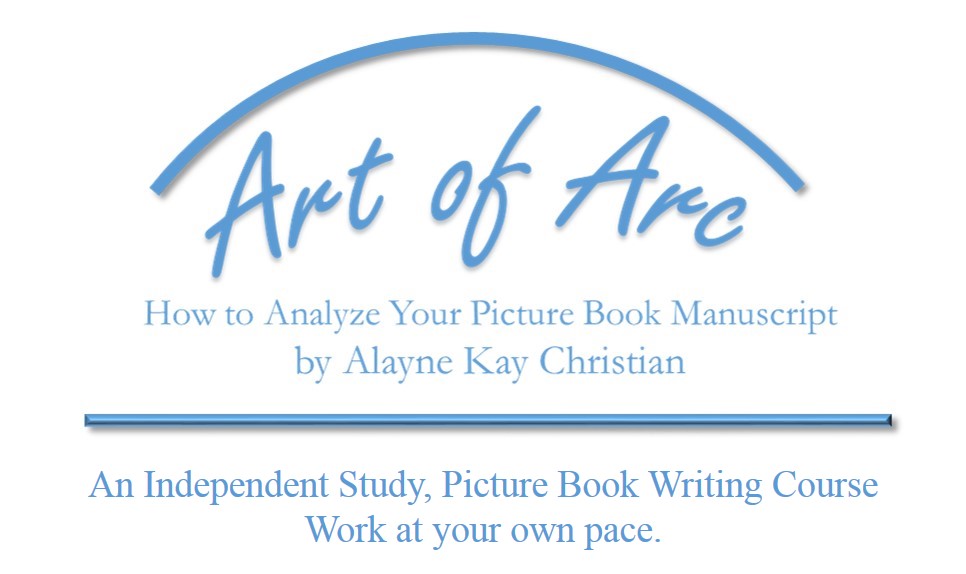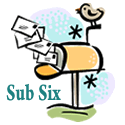
 I’d like to introduce author/illustrator Milanka Reardon. She is the illustrator for Who Will? Will You?—written by Sarah Hoppe and published by Blue Whale Press. In this interview, Milanka shares excellent tips for remaining consistent from page to page, illustrating facial expressions and body language, dealing with creative direction, and more!
I’d like to introduce author/illustrator Milanka Reardon. She is the illustrator for Who Will? Will You?—written by Sarah Hoppe and published by Blue Whale Press. In this interview, Milanka shares excellent tips for remaining consistent from page to page, illustrating facial expressions and body language, dealing with creative direction, and more!
How did you get your start as a children’s book illustrator?
I have always loved to draw from the time that I was a little girl living in Titograd, Yugoslavia with my mother. I was fascinated by the pictures in the old fairy tale books from that country. I still have most of them. That is the one thing that I carried with me when I emigrated from Yugoslavia when I was six years old. I left any toys I had behind. My aunt sent us a roll of toilet paper when we lived in the old country, and I used to draw pictures on it. It made a great continuous storyboard and I filled each square with pictures!
When I decided to go back to school for art, I thought that Natural Science Illustration would be a great fit for me since my undergraduate degree is in biology, (art school wasn’t considered a practical thing for an immigrant girl). And while I loved drawing and painting plants and animals, I wanted to tell a story with them. I always loved the funny individual expressions of the animals and saw them as characters, and I wondered about their story. So that naturally led me to the Children’s Book Illustration program at Rhode Island School of Design. Once I started that program, I found that I had so many stories that I wanted to tell with pictures, and that was just the beginning.
You are also a writer. Which came first? Writing or art?
The art, definitely! I still find it hard to think of myself as a writer.
Side note from Alayne: I’ve had the pleasure of seeing one of your author/illustrator pieces (Blog reader: see image above for Nana’s Wall) and it is so wonderful that I can’t forget about it!
Thank you so much, Alayne. That story parallels my life so much that it came naturally. But of course, the pictures came first. Then it took several years of revising the story to make it into a real picture book. I’m hoping that it will be published someday.
Kirkus Reviews had the following to say about your Who Will? Will You? illustrations:
“A beautifully illustrated tale that’s sure to appeal to animal lovers and budding environmentalists. . . . Reardon’s realistic pastel-and-ink illustrations, populated with humans with a variety of skin tones, do an excellent job of hiding the identity of the pup and showing the adults’ shocked expressions.”
I agree with Kirkus. The drawings you have done for my next book, Old Man and His Penguin, are equally as impressive.
Do you have any artistic influences? If not, what does influence your style?
 I have so many influences! I love to travel and get the feel for a place, and I think that influences my illustrations. Maybe that’s why they have an old-world feel. With Who Will? Will You? I really tried to show a diverse world of characters for the book. That is why the Kirkus review made me so happy. I was really trying to show a population of humans that was diverse without singling out one group of people. I wanted Lottie to ask different people who will take care of her pup, and I tried to imagine who she would meet in the real world. The animals were just the extra fun bonus to illustrate!
I have so many influences! I love to travel and get the feel for a place, and I think that influences my illustrations. Maybe that’s why they have an old-world feel. With Who Will? Will You? I really tried to show a diverse world of characters for the book. That is why the Kirkus review made me so happy. I was really trying to show a population of humans that was diverse without singling out one group of people. I wanted Lottie to ask different people who will take care of her pup, and I tried to imagine who she would meet in the real world. The animals were just the extra fun bonus to illustrate!
Do you have a preferred medium?
I painted mostly with oils when I started painting portraits. Then I found that I could achieve some fantastic results with colored pencils. I love to explore different mediums. Now I am happiest working with watercolors and pencils. I love the looseness of the water and paint and watching it flow on paper, and then I like to have some areas more controlled with colored pencil or pastel pencil. I try to achieve a nice variety of textures. But most of all I am drawn to whatever works for creating that unique character that best fits the story. I have also been able to add finishing touches digitally with Photoshop or Procreate.
What medium and process did you use for the Who Will? Will You? illustrations?
 For Who Will? Will You? I used mostly watercolors and pencils, both pastel pencils and colored pencils. After scanning the paintings, I was able to make adjustments using Procreate and Photoshop as well.
For Who Will? Will You? I used mostly watercolors and pencils, both pastel pencils and colored pencils. After scanning the paintings, I was able to make adjustments using Procreate and Photoshop as well.
Blue Whale Press is involved in the illustration process throughout book development. What was it like following a publisher’s process versus working independently?
Working with Blue Whale Press has been a wonderful experience. I had creative freedom with the illustrations, and the editor and publisher were very supportive while providing professional feedback throughout the process. Also the author, Sarah Hoppe, did a fantastic job writing a fun story and making each word count.
The last book I illustrated was self-published. Illustrating for someone who is self-publishing their book is very different. The author of the story had definite ideas of what he wanted on each page, and there was a lot more input on each individual illustration from the author throughout. It’s kind of nice with a small press because you have the best situation in that the publisher trusts you to create the characters and to come up with the book dummy but is available and provides professional feedback where needed. The overall process was very positive and supportive with great communication between the editor, publisher and myself. Thank you, Alayne, for that!
It has all been my pleasure, Milanka.
You have been very gracious and such a pleasure to work with in all ways, but also in the area of creative direction. Do you have any tips for illustrators regarding how to keep from taking direction personally?
Wow, that’s a tough one. I think that anyone that has gone to art school realizes that critiques can be tough. But you try to use them to improve your own artwork. In the case of illustrating a picture book, you have to always be open to suggestions and ideas that may improve the story. So, it’s more about working together with the editor to make a better book. Making a good picture book is a collaborative effort. The author, the illustrator, editor and publisher all have ideas to make it work and hopefully it all comes together in the best way possible in the end. That is why I have always been open to edits. I know personally that I spend so much time staring at that illustration that I may miss something important, so the creative direction is appreciated.
My advice to any illustrator would be to look at the final image and to do what is best for the book. If more than one person critiques the same area of the illustration, then it’s probably not reading correctly. The creative direction from the editor and publisher is meant to improve the story, it is not a personal commentary on you.
I love the little extras you put on every page of Who Will? Will You? One little thing I noticed that made me smile is one of the sea lions is cross-eyed 😉 But you just created such a nice world for Lottie.
How do you get over the natural instinct to show only what is in the text and instead put some of yourself into the story by doing a little something extra or special on each page?
The job of the illustrator is to add to the story and to tell the story with pictures. So naturally you want to add a little something extra to the story. The illustrations should complement the text and the text should also complement the illustrations. They work together. There is no need to be redundant and only show what is told in words. It’s a lot more fun to add the little extras. Children are smart and they will notice. It’s the difference that makes a book one that a child will want to read over and over again to discover even more within the book and the illustrations each time they read it.
Does it take courage to express yourself and help tell the story?
Yes and no. Personally it does show some of your sense of humor, adventure or even if you’ve done your research correctly. But, I feel that you should show some of yourself in your illustrations because that’s the point of both telling with words and pictures. It’s all about making the story fun for children.
Do you have any tips for illustrators for going beyond the text with your expression?
Research! Research the location. In Who Will? Will You? I had to think of where could you find all of those types of animal rescue places in one area, and even a bat cave! And how do you make each one different and unique. Then you can put who would be in those places. So that research was fun – going to the beach and even a cave and sketching and photographing. You notice, especially when you sketch people and animals the different body positions and facial expressions that people have. Animals too! It’s fun to observe and sketch.
Lottie and Rufus are so adorable. Where did you find your inspiration for them—well, for all the characters, really?
I can remember when I was thinking about Lottie. I was in a Paneras and I saw this beautiful little girl come in with her mother and she had this messy hair. When I came home I couldn’t forget her funny expressions and the messy hair. So I drew who I thought Lottie would be. And I remember my initial sketches were of a much younger Lottie! I remember you telling me that my little preschool Lottie would not be walking the streets alone looking for a home for a pup, so please change her to an older child. You were so nice with your directions and I thought, okay, that’s not really a problem. I can draw an older Lottie. And then what kind of dog would my older Lottie have. It was early enough in the process that it wasn’t a problem to change because I was only showing you initial sketches, and I hadn’t started the storyboard yet. I did a lot of sketching before the right Lottie and her dog appeared on the pages.

Notice the fun eyes on the sea lion. But notice the sad eyes on Lottie. This is actually an earlier image. In the book, she has tears 😦
In the Who Will? Will You? art, you do an excellent job of showing mood and emotion via facial expression and body language.
How did you learn to do that? And do you have any tips for illustrators on developing that skill?
That takes time and a lot of sketching from life. Really noticing that people hardly ever stand like those stick figures looking straight ahead that we all love to draw. Most people are always leaning or moving around. Body language tells a lot. I went to the SCBWI LA conference and took an Illustrator Intensive on character design that the art director Laurent Lin was in. He used to work for Sesame Street, so he brought in puppeteers that showed us some amazing things about body language. The stories that they told with just those puppets brought me to tears and made me laugh. That was with just body language – the puppets eyes and mouth weren’t moving, just their bodies. It was an awesome lesson, one that I am still working on. It also comes back to sketching from life and observing body language and putting in the tiny details after.
I believe one of the most difficult things for an illustrator is to remain consistent from page to page—especially with characters. What is your trick for remaining consistent?
I try to keep the body proportions the same. It’s not always easy to do, especially when you want to draw freely which I think is more important in order to get expressive illustrations. But you can always scan things into Photoshop or Procreate and check your proportions and use that as a guideline when you are going into the final drawing phase. Or you can use good old-fashioned tracing paper. Let your initial sketches be free and fun. In the final illustrations try to get those proportions right. That will make the painting stage go so much more smoothly. You will have figured it all out in the drawing stages.
You recently signed with an agent as an author/illustrator! I was so excited to get that news. Congratulations, again!
Thank you so much, Alayne! I signed with Barbara Krasner with Olswanger Literary. I am really hoping to get my picture book dummy out into the world!
Blog reader: See toilet paper art image at the beginning of this interview. That image is from the dummy for Nana’s Wall. A beautiful story.
What was it like to see your granddaughter look at the book for the first time?
Oh my goodness, that was amazing! It truly was a test. She’s not quite two years old yet but she loves the book. She was so funny when she looks at the pictures, she absolutely loves the way each of the adults say “no” to Lottie. She actually mimics the hand movements that they use (thank goodness I got the body language on those characters!) No is a favorite word of hers! She also was sad when she first saw Lottie crying and kisses that picture. And she loves to sing one of her favorite songs in the end. (From Alayne: Sorry, we can’t share the song without giving away the ending of the book.)
She is so adorable. It is a thrill to see this. Thank you for sharing these precious moments!
It is an absolute pleasure to work with you, Milanka. I’m thrilled that you are illustrating one of my picture books next! Your work has brought us so many smiles and heartfelt moments over the last year. And the visual story you have told is amazing! Thank you for helping us make a wonderful book that we are so proud of.
It has been and continues to be a pleasure working for you and with you, Alayne! Thank you so much for the kind words and for this opportunity!
BONUS!
When, at another time, I asked Milanka questions that I had for myself personally, as an illustrator wannabe, she graciously shared excellent advice—excerpts below.
About Style
I think that’s wonderful that you are taking an online art class. And cute is a wonderful style to have. We can’t all be the same, that would be boring. . . . A realistic style can be a curse. It just takes a lot of time and no matter how hard you try, there is always someone that can do it better. That’s what an illustration teacher at RISD told me. Besides, if you have a realistic style, it’s so easy to notice little mistakes. So go with your style and just practice every day.
Best Advice
Honestly, the best advice that I can give you is to sketch people every day. They don’t have to be perfect sketches, just sketch. And one thing you’ll notice is all of the wonderful gestures. People don’t just stand still, they lean, they bend they do all sorts of poses even when just standing there. Sketching will help no matter what style of illustration you choose, or sometimes I feel it’s the style that chooses you. But either way, you need to know a bit about anatomy and that’s great to be learning from online classes and reference books too.
I love “the style that chooses you”!
More about Inspiration for Lottie and other Who Will? Will You? Characters
Lottie was made up in my mind and so were her various adult people. Remember when I sent you the turnaround of Lottie. I did all the things that I needed to to map out her features and size, etc. But she looked a little stiff at first. So I never used those exact images. By observing real people, she became softer and moved better along the page. Actually even though Lottie was made up, I noticed a little girl in Paneras that was so cute but had that messy hair, and I loved the way she sat on her leg and leaned from side to side, so expressive. So, I had her in mind when creating Lottie and I knew I wanted a diverse set of characters. Children in a playground are also fun to watch and to draw. So just observing people helps. They are not all the same size or shape either.
Sketching is Fun
Sketching is a lot of fun. You don’t need to spend a lot of time on it. Nobody has to look at it. Afterwards, you can choose a sketch to really focus on and draw out. It’s such a good feeling when your drawing starts to come to life.
Inspiration for Alayne’s Next Picture Book
Old Man and His Penguin
The kids in the penguin story came from my sketchbook from when I traveled to Cuba on a cruise. I had my sketchbook with me and children were on recess when we were in the old town in the plaza. I did some quick sketches—it was fun, and like most things in life, you never know when they might come in handy. The old man is made up, but I did ask my husband to do a couple of poses and to walk so I could take a picture to draw from. He would never stand still long enough for me to sketch even a quick two-minute sketch!
Simple Lines
You don’t have to be super realistic. Some people are so expressive with simple lines. I wish that I could be. I’m still working on that. Just go out there and sketch different people and gestures and have fun with it.
About Milanka
Milanka Reardon learned to illustrate at a very young age. When she emigrated to the U.S. from the former Republic of Yugoslavia at the age of six, no one in her school spoke her language, so her teachers sketched images of the English words for her. But instead of copying the words, Milanka took it upon herself to improve their work and draw more interesting pictures. Later, Milanka went on to earn a children’s book illustration certificate from the Rhode Island School of Design and was awarded the 2016 R. Michelson Galleries Emerging Artist Award. She is the central New England illustrator coordinator for the Society of Children’s Book Writers and Illustrators (SCBWI). You can read more about Milanka and see some of her artwork by going to MilankaReardon.com.
















 About Melissa:
About Melissa:








